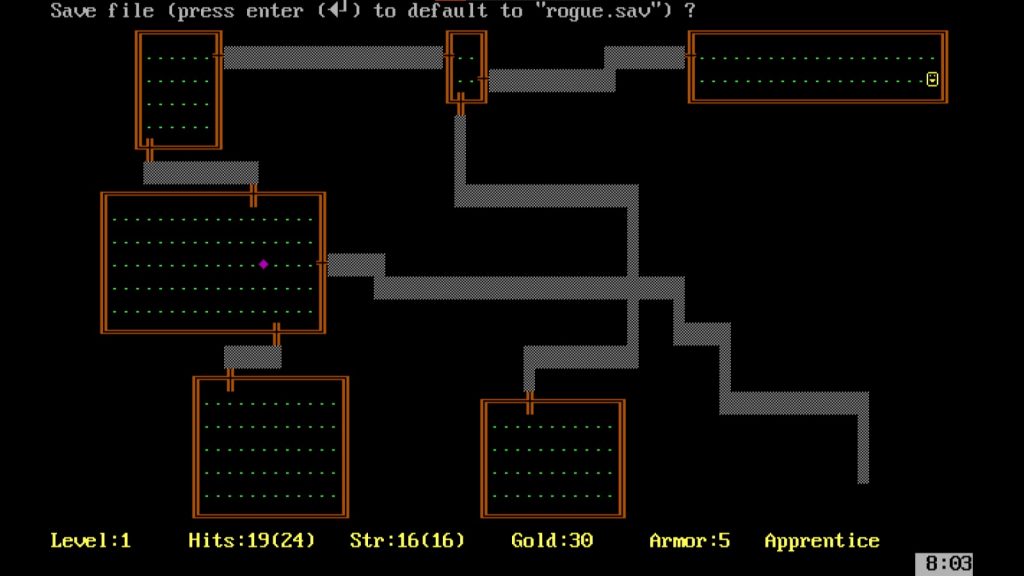If there is another genre I love, it is the Roguelike. The endless amounts of randomly generated dungeons to crawl and loot to grab define this genre. Where did this genre begin, though? Well, it all started with a single game little over 40 years ago.
The Birth of Rogue
Way back in the mystical year of 1980, there were two gents named Michael Toy and Glenn Wichman, both age 19. They went to college at UC Santa Cruz and worked on computer coding. Both Michael and Glenn had a love for the computer text-based game Adventure. The game would only give you descriptions of surrounding and the like through text, as there were no graphics at the time.
However, Glenn recalls around this time at UC Berkeley a man named Ken Arnold had put together a library of routines. This ultimately allowed programs, like games, to put a character on the screen. While it didn’t allow for true graphics, it would serve as a primitive form of them. Letters, symbols, and numbers could now be used to represent very rudimentary pictures.
Eventually, the package containing the library made its way around several campuses. As the creative minds they were, Michael and Glenn wanted to create a graphical adventure game with the library. Ultimately, this gave birth to Rogue (a name Glenn came up with based off the character class from Dungeons and Dragons).
What type of game is Rogue?
Rogue is an adventure game that takes place in the “Dungeons of Doom,” where the fabled Amulet of Yendor rests. Everything in the game is randomly generated. This means floor layouts, item placement, and enemy placement are all randomized. That makes every play through different than the last.

You fight monsters in this game simply by hitting the arrow key in the direction of the monster. After beating a monster, you gain experience points. Gain enough of these and you’ll level up. The game play itself is very basic, but for a game from the 80s, I can overlook that. This is especially true for a game that helped pioneer its own sub-genre.
The Legacy of Rogue
Rogue helped to inspire the sub-genre of games called “Roguelikes.” Essentially, these games take after the original Rogue with how they play. A somewhat well-known series that spawned from this sub-genre is Chunsoft’s Mystery Dungeon. Even the game Hades, a Roguelike developed by Supergiant Games, was nominated for Game of the Year at 2020’s Video Game Awards. There are countless games that have been inspired by the original Rogue. Needless to say, the Roguelike sub-genre has become very popular and successful since its inception.
Final Thoughts
Rogue has undoubtedly inspired many games since the early 1980s. Its always fascinating to see how a seemingly small and simple game inspire a myriad of other games. One thing’s for sure, I’m thankful that Michael Toy and Glenn Wichman followed their passions to develop Rogue. It gave rise to one of my favorite sub-genres in gaming. What do you all think of the history and legacy of Rogue? Let me know in the comments. Until next time my fellow nerds, peace.
Source(s)
https://web.archive.org/web/20150217024917/http://www.wichman.org/roguehistory.html
Rogue is a really fascinating title. Despite the relative obscurity of the original Rogue, it is almost solely responsible for what I would consider to be one of the most popular video game genres of the past decade or so.
It’s crazy to think about just how ahead of its time this game was. It’s a great example of game developers making a game for themselves, and coming up with something extremely unique as a result.
Great job; this post is well written!
It is cool to know where the ideas and genres in gaming came from and that it inspired fans to create fantastic games that we are currently playing.